
Layout, Design and Features …
The following image shows the front of the 2.5″ Crucial MX200 1TB SSD:
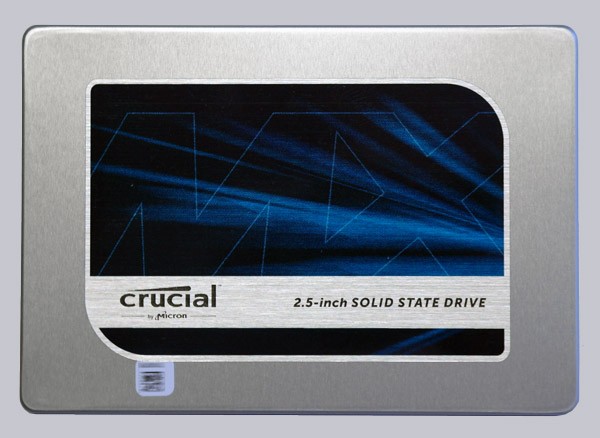
On the back you can see a label of the Crucial MX200 2.5-inch SSD with a few technical data and the firmware version. You can see the SATA3 connectors for power supply and data in the picture on the left. The SSD connector is identical to conventional SATA hard drives and a SATA3 SSD can be operated with a lower speed at an SATA2 interface:
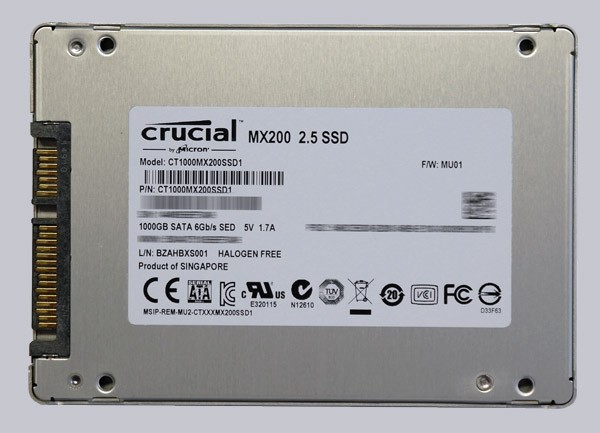
Opening the Crucial MX200 SSD is not quite as easy as the previously tested Crucial SSDs, nevertheless we did it, to show you a picture of the MX200 board.
Here you can see the two SSD half’s together with the SSD board.
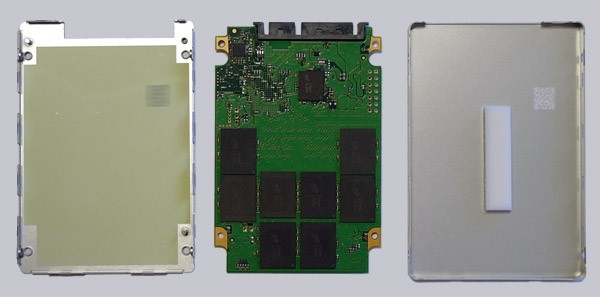
Here are eight 16nm Micron NAND modules of the SATA3 SSD with 1 TB capacity and one of the two Micron D9RLT 512MB LPDDR2 cache modules:
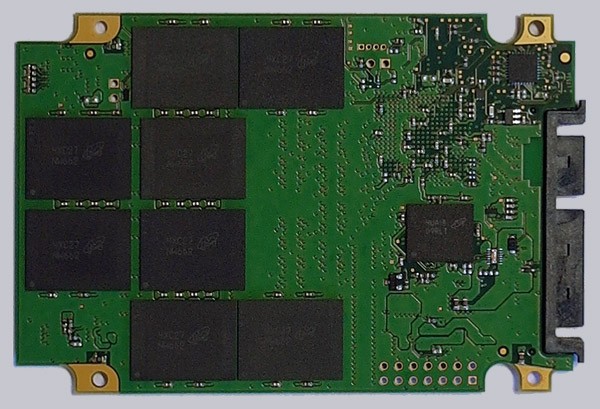
On the back of the board it looks not so empty at this 1 TB type, like the 500 GB MX200, because here are eight more 16nm Micron NAND modules, as well as a second Micron D9RLT 512MB LPDDR2 cache module and the Marwell 88SS9189-BLD2 controller IC of the 1 TB SATA3 SSD. BTW. the MX200 SSD also offers the Microsoft eDrive compatible, built-in 256-bit AES encryption (TCG Opal 2.0 and IEEE 1667), which allows a hardware encryption with an appropriate UEFI hardware equipment and Microsoft Windows 8 or Microsoft Windows Server 2012 with BitLocker enabled:
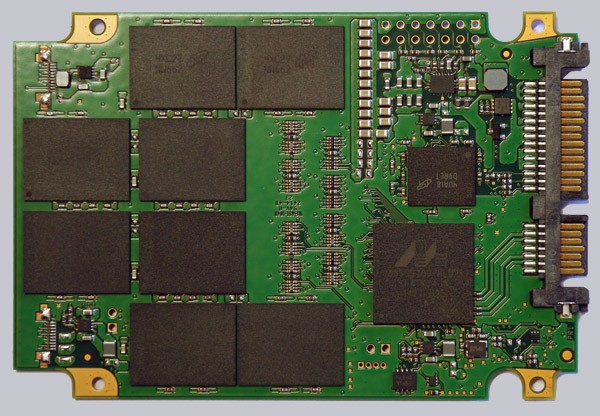
Another feature of the Crucial MX200 SSD is the lower height, which is in contrast to some previous SSDs such as the Crucial m4 SSD, only 7 mm and no more 9.5 mm. Crucial includes a 7 mm to 9.5 mm adapter frame which can be layed or sticked on the SSD, if necessary to stay compatible with the very popular height of 9.5 mm:

SSD firmware update …
At review date, Crucial offered no newer firmware download than the already installed MU01 firmware for the MX200 SSD. With the new Crucial storage Executive tool, you can upgrade the firmware of the SSD relatively easy, but you should always secure important data before updating the firmware. The Crucial storage Executive tool incidentally has the peculiarity to update all SSDs of the same type, even if you chose to only one particular SSD.

